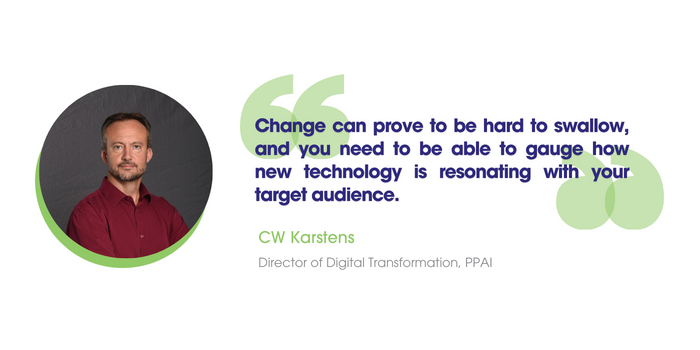CW Karstens: Measuring Innovation Success

Innovation is the cornerstone of progress in today’s rapidly evolving world. Whether in business, technology or society at large, it drives growth, efficiency and competitiveness. However, its success in any given project is not always straightforward.
Forward-thinking initiatives are inherently aimed at delivering outcomes for the future. As a result, traditional metrics like financial returns don’t always capture their impact. There is no one-size-fits-all approach, but it’s worth delving into various ways to measure the success of these sort of projects and attempt to provide a framework for evaluation.
Tangible measures of success aren’t easy to come by when innovation is the name of the game, but key performance indicators are as good a place to start as any. KPIs tend to vary depending on the nature of the project and the organization’s objectives. Increased revenue, market share, customer satisfaction or operational efficiency could all be relevant. Below are a few KPIs and how to consider them under these conditions.
Adoption Rate
An important metric to evaluate is the rate at which an innovation project is embraced, as the adoption rate can bring valuable insight. Tracking the number of users/customers adopting the new product or service – and the speed at which they do so – can indicate how much value it’s actually providing users.
ROI (And Hidden Costs)
While the return on investment may not fully capture broader impacts, it remains an important metric. However, it’s essential to consider both short-term and long-term returns, as some innovations may take time to generate significant financial gains. A common pitfall of considering ROI is ensuring that hidden support costs are included in any calculations.

Customer Feedback
Customer feedback is invaluable for understanding whether your company is meeting market needs and expectations. You can start with:
- Surveys.
- Focus groups.
- Reviews.
- Direct feedback channels.
Change can prove to be hard to swallow, and you need to be able to gauge how new technology is resonating with your target audience.
Time To Market
It’s OK to let an innovative process take however long it takes to execute. But that doesn’t mean time becomes irrelevant. You still need to track the time taken from ideation to commercialization, and everything in between. This will help you more clearly identify a bottleneck in the process versus a step that simply needs to be taken slowly.
A Successful Project Continues To Provide Metrics
In today’s socially conscious world, the environmental and social impact of innovation projects is increasingly important. Metrics such as carbon footprint reduction, resource efficiency and social responsibility initiatives can help gauge a project’s sustainability and ethical implications. Projects that contribute positively to environmental conservation or address social challenges demonstrate holistic success beyond financial metrics.
It all requires a multidimensional approach that goes beyond traditional financial metrics. Check back next month as I wrap up my innovation series with practices that can be applied to your business.
Karstens is PPAI’s director of digital transformation.

